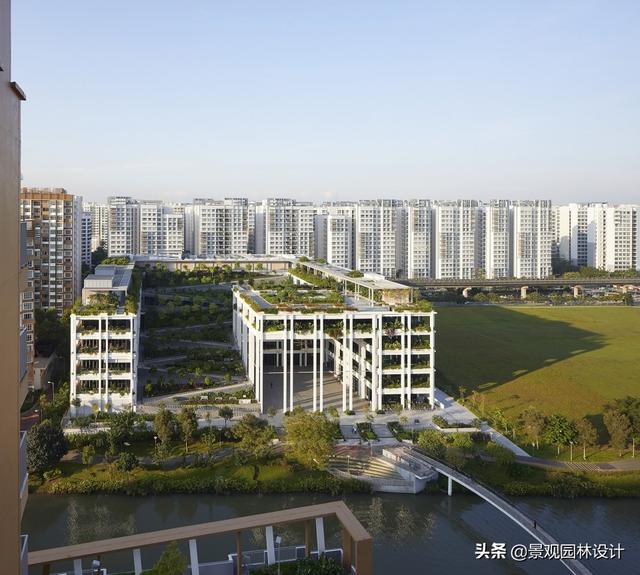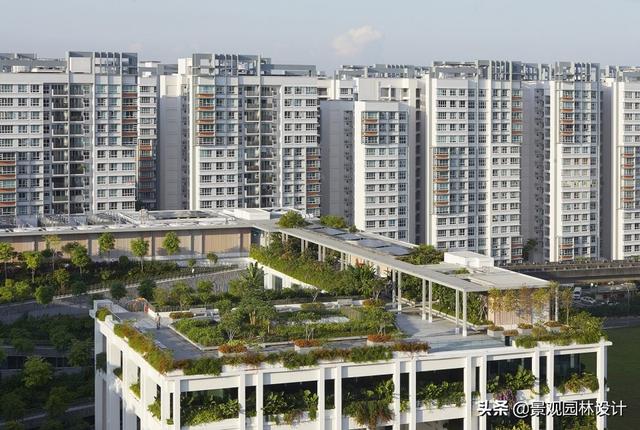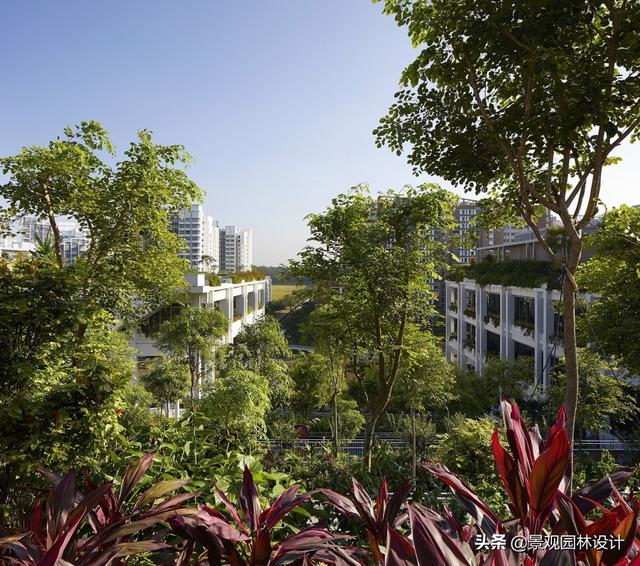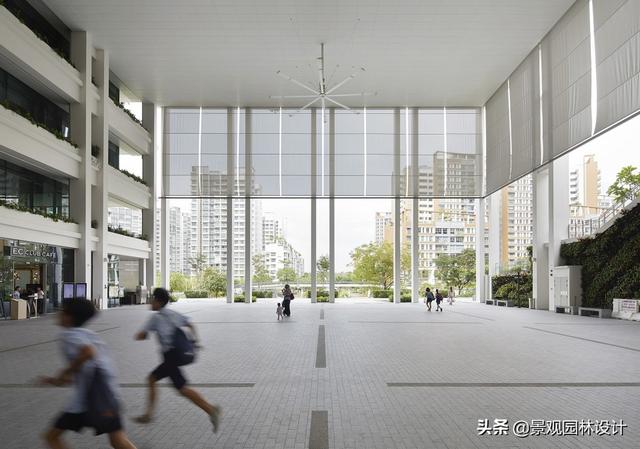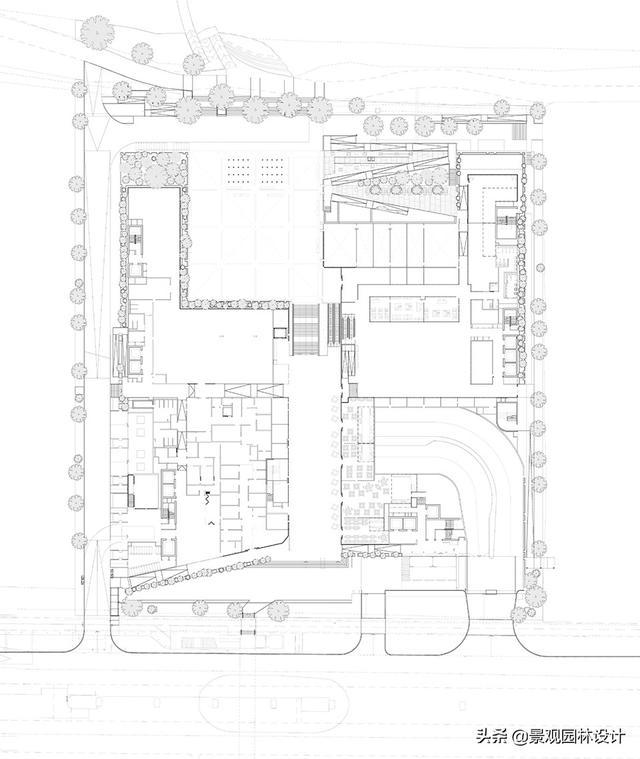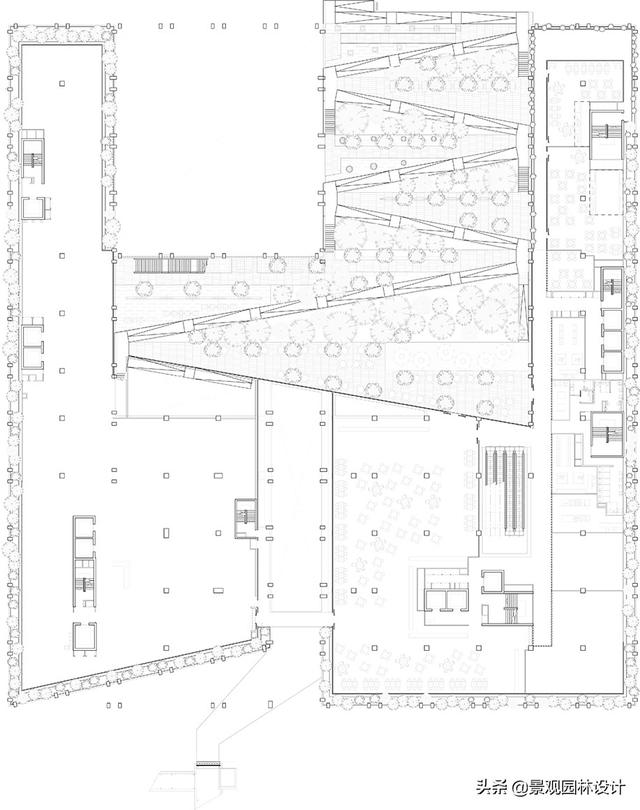思銳建築事務所與Multiply Architects合作完成了位于新加坡的Oasis Terraces社區中心和醫院的設計。
Serie Architects working in collaboration with Multiply Architects has completed Oasis Terraces, the new Punggol Neighbourhood Centre and Polyclinic in Singapore.
▼鳥瞰圖,aerial view ©Hufton + Crow
▼Oasis Terraces社區中心和醫院旨在爲其所在的社區提供服務,Oasis Terraces is a new generation of community centres to serve its public housing neighbourhoods ©Hufton + Crow
Oasis Terraces(綠洲平台)是由新加坡住房和發展委員會開發的新型社區中心,旨在爲其所在的社區提供服務,包括公共設施、購物商場、便利設施和政府綜合醫院。設計引入了一個連續的花園平台,並使其呈階梯狀向水岸延伸。這些被綠植覆蓋的花園可以被用作重要的公共活動空間,也可以成爲兒童遊樂場和天然的劇場舞台。
Oasis Terrace is a new generation of community centres developed by Singapore’s Housing and Development Board to serve its public housing neighbourhoods. It comprises communal facilities, shopping, amenities and a government polyclinic. Serie Architects’ design utilises a series of lush garden terraces that slope towards the waterway as one of the key elements to generate communal activities. These lush gardens act as communal spaces, children’s playgrounds and a natural amphitheatre.
▼連續的花園平台呈階梯狀向水岸延伸,a series of lush garden terraces slope towards the waterway ©Hufton + Crow
▼建築外觀,exterior view ©Hufton + Crow
▼建築的每個立面都充斥著綠植,every visible elevation of the building is covered with lush plating ©Hufton + Crow
屋頂同樣覆蓋以茂密的植被,包括用于城市農業的種植床。這些花園不僅能夠爲社區帶來更加優美的景觀,同時也能夠促進集體性的園藝活動,通過種植和維護花園來建立更加牢固的社區紐帶。
The roof is also heavily landscaped and features planting beds for urban farming. The gardens play more than just an aesthetic role in the community; they are a collective horticultural project. By bringing residents together to plant, maintain and enjoy them, the gardens help nourish community bonds.
▼屋頂花園,roof garden ©Hufton + Crow
▼景觀細部,landscape detailed view ©Hufton + Crow
©Hufton + Crow
餐廳、教學中心和綜合醫院等空間共同俯瞰著公共花園,並且直接與花園平台相連。人們可以直接在戶外花園中用餐。綜合醫院的等候區也同樣享有花園平台和水岸的優美視野。
Overlooking the communal gardens on platforms are rooms and outdoor areas for communal dining, restaurants, education centres, and polyclinic services. These spaces are directly connected to the terraced garden, allowing dining activities to spill out into these areas. Likewise, the waiting areas of the polyclinic enjoy views of the garden terraces and waterways.
▼俯瞰公共花園,aerial view to the communal gardens ©Hufton + Crow
朝向水岸的風雨廣場是社區中充滿活力的核心地帶,可以用于各種類型的社區活動和事件。廣場連接了貫穿場地的東西向和南北向道路,同時與附近的Oasis輕軌站相連接,從而成爲社區中重要的交通節點。
A large sheltered plaza fronting the waterways creates the vibrant heart for the community. This plaza will be used for a wide range of communal activities and events and sits at the crossing point of the east-west and north-south thoroughfares of the site. All circulation through the site and from the adjacent Oasis LRT station culminates at the plaza.
▼風雨廣場,the sheltered plaza ©Hufton + Crow
建築的每個立面都充斥著綠植,與環繞在餐廳和醫院外部的涼廊共同在室內和室外之間形成一層“濾網”,使陽光和自然風柔和地透入內部空間,從而讓整個建築呈現出一種輕盈而開放的感覺。
Every visible elevation of the building is covered with lush plating. Together with the veranda spaces that wrap around the restaurants and polyclinic, the plants act as an environmental filter between the exterior and interior spaces. The architecture is also characterised by a sense of lightness and openness allowing daylight and breezes to permeate the building, promoting the use of natural ventilation.
▼從水岸望向建築,view from the waterway ©Hufton + Crow
▼輕盈而開放的立面,a light, open facade system ©Hufton + Crow
思銳建築事務所的主創建築師Christopher Lee表示:“我們的設計借鑒了新加坡住房和發展委員會在上世紀70-80年代開發的住宅建築中常見的開放式框架,並基于景觀環境將這種框架轉變爲一個更加輕盈和開放的、能夠捕捉和容納各類社區功能的系統——這是一座爲社區生活的展開而打造的建築。”
Christopher Lee, Principal of Serie Architects: ‘Our design is informed by the open frames commonly found in the facades and corridors of HDB’s housing blocks of the 70s and 80s. We’ve transformed this precedent into a light and open frame that captures and accommodates diverse programmes for the community in a landscape setting — it is an architectural framework for communal life to unfold’.
▼平面圖,floor plans
▼剖面圖,section


